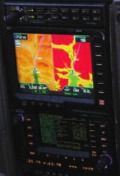 If ADS-B began in Alaska’s Capstone program in 1999, was put into practical use with UPS cargo jets the same year, and the network of ADS-B ground stations should be completed by 2013, why has the FAA set 2020 as the deadline for equipping planes with just ADS-B/out? The Reason Foundation’s Bob Poole asks the question and after “puzzling over this for several months now, interviewing experts and reading extensively,” Poole has come to the conclusion that the delayed implementation of improved technology providing in-cockpit traffic, weather and more … is largely your fault. “Because aircraft owners balk at being forced to buy and install new gear until they get real benefits from it (and this is especially true of GA owners), FAA felt under strong political pressure to make the deadline as far off as possible (hence, 2020).” Poole recognizes that part of the problem is that when compared with the radar coverage and ATC, pilots in the lower 48 have little to gain in equipping their aircraft with ADS-B/out. And, in spite of its benefits for all of aviation, ADS-B/in is expensive. He also recognizes that the root of the problem is deeper than your wallet and he does offer a solution, unlikely as it may be … .
If ADS-B began in Alaska’s Capstone program in 1999, was put into practical use with UPS cargo jets the same year, and the network of ADS-B ground stations should be completed by 2013, why has the FAA set 2020 as the deadline for equipping planes with just ADS-B/out? The Reason Foundation’s Bob Poole asks the question and after “puzzling over this for several months now, interviewing experts and reading extensively,” Poole has come to the conclusion that the delayed implementation of improved technology providing in-cockpit traffic, weather and more … is largely your fault. “Because aircraft owners balk at being forced to buy and install new gear until they get real benefits from it (and this is especially true of GA owners), FAA felt under strong political pressure to make the deadline as far off as possible (hence, 2020).” Poole recognizes that part of the problem is that when compared with the radar coverage and ATC, pilots in the lower 48 have little to gain in equipping their aircraft with ADS-B/out. And, in spite of its benefits for all of aviation, ADS-B/in is expensive. He also recognizes that the root of the problem is deeper than your wallet and he does offer a solution, unlikely as it may be … .
In Poole’s more ideal scenario, a balanced group of “aviation stakeholders” would presumably act in place of Congress or the FAA. Directly affected by the costs and technology, stakeholders would universally see the benefits of retiring old radars before attrition turned them into money-sucking vortexes. Stakeholders would futher recognize the improvements in safety and airspace capacity won through cockpit displays of weather and traffic (ADS-B). Those incentives might then, according to Poole, drive a desire for rapid implementation of ADS-B/in plus ADS-B/out strong enough to fuel the inclusion of financial aid to help GA users offset costs. All of this for the benefit of the aviation community as a whole. Rapid implementation under this plan would also mean large-scale production of hardware, leading to lower overall costs, further softening the blow.


































